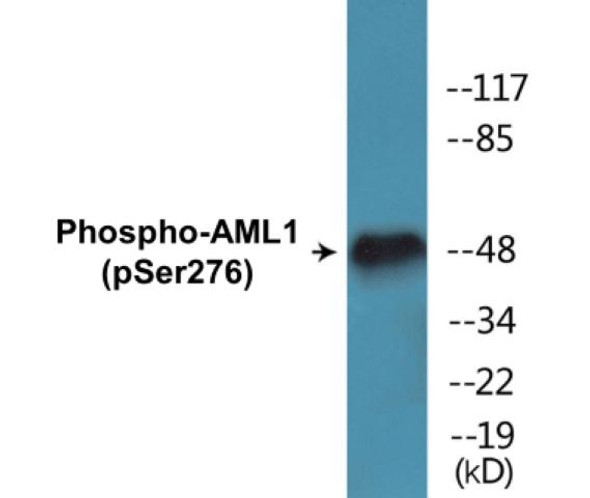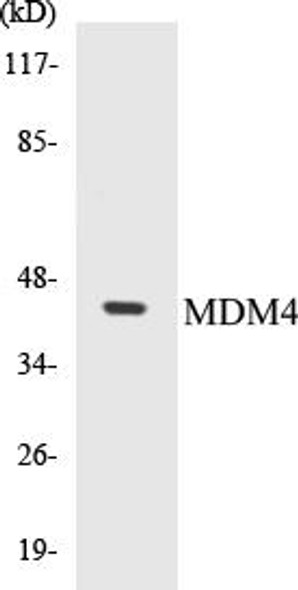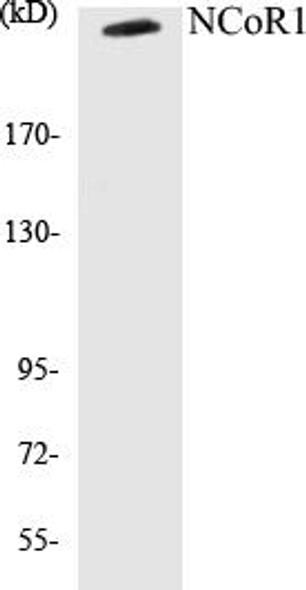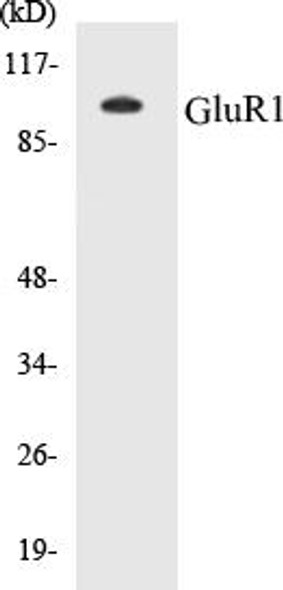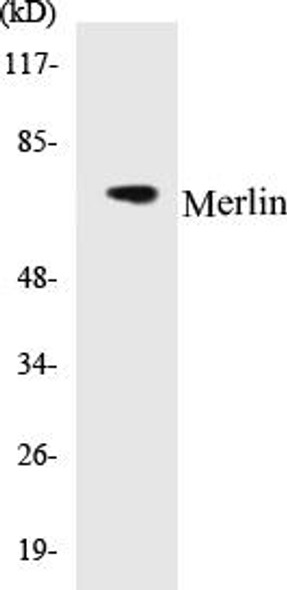AML1 Colorimetric Cell-Based ELISA Kit
- SKU:
- CBCAB00523
- Product Type:
- ELISA Kit
- ELISA Type:
- Cell Based
- Research Area:
- Epigenetics and Nuclear Signaling
- Reactivity:
- Human
- Mouse
- Rat
- Detection Method:
- Colorimetric
Description
AML1 Colorimetric Cell-Based ELISA Kit
The AML1 Colorimetric Cell-Based ELISA Kit is a powerful tool for detecting AML1 levels in cell lysates and tissue homogenates. This kit offers high specificity and sensitivity, allowing for accurate and reproducible results in various research applications.AML1, also known as RUNX1, is a key transcription factor involved in hematopoiesis and is essential for normal blood cell development. Aberrant expression or mutations in AML1 have been linked to various hematological malignancies, making it a valuable target for studying leukemia and other blood disorders.
With the AML1 Colorimetric Cell-Based ELISA Kit, researchers can easily quantify AML1 levels in their samples, providing valuable insights into disease mechanisms and potential therapeutic targets. Trust in the accuracy and reliability of this kit to advance your research in the field of hematological diseases.
| Product Name: | AML1 Colorimetric Cell-Based ELISA |
| Product Code: | CBCAB00523 |
| ELISA Type: | Cell-Based |
| Target: | AML1 |
| Reactivity: | Human, Mouse, Rat |
| Dynamic Range: | > 5000 Cells |
| Detection Method: | Colorimetric 450 nmStorage/Stability:4°C/6 Months |
| Format: | 96-Well Microplate |
The AML1 Colorimetric Cell-Based ELISA Kit is a convenient, lysate-free, high throughput and sensitive assay kit that can detect AML1 protein expression profile in cells. The kit can be used for measuring the relative amounts of AML1 in cultured cells as well as screening for the effects that various treatments, inhibitors (ie siRNA or chemicals), or activators have on AML1.
Qualitative determination of AML1 concentration is achieved by an indirect ELISA format. In essence, AML1 is captured by AML1-specific primary antibodies while the HRP-conjugated secondary antibodies bind the Fc region of the primary antibody. Through this binding, the HRP enzyme conjugated to the secondary antibody can catalyze a colorimetric reaction upon substrate addition. Due to the qualitative nature of the Cell-Based ELISA, multiple normalization methods are needed:
| 1. | A monoclonal antibody specific for human GAPDH is included to serve as an internal positive control in normalizing the target absorbance values. |
| 2. | Following the colorimetric measurement of HRP activity via substrate addition, the Crystal Violet whole-cell staining method may be used to determine cell density. After staining, the results can be analysed by normalizing the absorbance values to cell amounts, by which the plating difference can be adjusted. |
| Database Information: | Gene ID: 861, UniProt ID: Q01196, OMIM: 151385/601399, Unigene: Hs.149261/Hs.612648 |
| Gene Symbol: | RUNX1 |
| Sub Type: | None |
| UniProt Protein Function: | AML1: CBF binds to the core site, 5'-PYGPYGGT-3', of a number of enhancers and promoters, including murine leukemia virus, polyomavirus enhancer, T-cell receptor enhancers, LCK, IL-3 and GM-CSF promoters. The alpha subunit binds DNA and appears to have a role in the development of normal hematopoiesis. Isoform AML-1L interferes with the transactivation activity of RUNX1. Acts synergistically with ELF4 to transactivate the IL-3 promoter and with ELF2 to transactivate the mouse BLK promoter. Inhibits KAT6B- dependent transcriptional activation. Heterodimer with CBFB. RUNX1 binds DNA as a monomer and through the Runt domain. DNA-binding is increased by heterodimerization. Isoform AML-1L can neither bind DNA nor heterodimerize. Interacts with TLE1 and ALYREF/THOC4. Interacts with ELF1, ELF2 and SPI1. Interacts via its Runt domain with the ELF4 N-terminal region. Interaction with ELF2 isoform 2 (NERF-1a) may act to repress RUNX1-mediated transactivation. Interacts with KAT6A and KAT6B. Interacts with SUV39H1, leading to abrogation of transactivating and DNA-binding properties of RUNX1. Interacts with YAP1. Interacts with HIPK2. Interaction with CDK6 prevents myeloid differentiation, reducing its transcription transactivation activity. Expressed in all tissues examined except brain and heart. Highest levels in thymus, bone marrow and peripheral blood. 11 isoforms of the human protein are produced by alternative splicing. |
| UniProt Protein Details: | Protein type:Oncoprotein; Transcription factor; DNA-binding Chromosomal Location of Human Ortholog: 21q22.3 Cellular Component: nucleoplasm; intracellular membrane-bound organelle; cytoplasm; basement membrane; nucleus Molecular Function:protein binding; protein homodimerization activity; DNA binding; protein heterodimerization activity; calcium ion binding; transcription factor binding; transcription factor activity; ATP binding Biological Process: hair follicle morphogenesis; central nervous system development; transcription, DNA-dependent; embryonic hemopoiesis; in utero embryonic development; positive regulation of transcription, DNA-dependent; positive regulation of granulocyte differentiation; regulation of signal transduction; liver development; negative regulation of granulocyte differentiation; peripheral nervous system neuron development; behavioral response to pain; positive regulation of angiogenesis; myeloid progenitor cell differentiation; positive regulation of interleukin-2 production; myeloid cell differentiation; positive regulation of transcription from RNA polymerase II promoter; hemopoiesis; skeletal development Disease: Platelet Disorder, Familial, With Associated Myeloid Malignancy; Leukemia, Acute Myeloid; Rheumatoid Arthritis |
| NCBI Summary: | Core binding factor (CBF) is a heterodimeric transcription factor that binds to the core element of many enhancers and promoters. The protein encoded by this gene represents the alpha subunit of CBF and is thought to be involved in the development of normal hematopoiesis. Chromosomal translocations involving this gene are well-documented and have been associated with several types of leukemia. Three transcript variants encoding different isoforms have been found for this gene. [provided by RefSeq, Jul 2008] |
| UniProt Code: | Q01196 |
| NCBI GenInfo Identifier: | 215274205 |
| NCBI Gene ID: | 861 |
| NCBI Accession: | Q01196.3 |
| UniProt Secondary Accession: | Q01196,O60472, O60473, O76047, O76089, Q13081, Q13755 Q13756, Q13757, A8MV94, B2RMS4, D3DSG1, |
| UniProt Related Accession: | Q01196 |
| Molecular Weight: | 453 |
| NCBI Full Name: | Runt-related transcription factor 1 |
| NCBI Synonym Full Names: | runt-related transcription factor 1 |
| NCBI Official Symbol: | RUNX1 |
| NCBI Official Synonym Symbols: | AML1; CBFA2; EVI-1; AMLCR1; PEBP2aB; AML1-EVI-1 |
| NCBI Protein Information: | runt-related transcription factor 1; CBF-alpha-2; PEA2-alpha B; PEBP2-alpha B; oncogene AML-1; AML1-EVI-1 fusion protein; acute myeloid leukemia 1 protein; SL3-3 enhancer factor 1 alpha B subunit; SL3/AKV core-binding factor alpha B subunit; core-binding factor, runt domain, alpha subunit 2; polyomavirus enhancer-binding protein 2 alpha B subunit |
| UniProt Protein Name: | Runt-related transcription factor 1 |
| UniProt Synonym Protein Names: | Acute myeloid leukemia 1 protein; Core-binding factor subunit alpha-2; CBF-alpha-2; Oncogene AML-1; Polyomavirus enhancer-binding protein 2 alpha B subunit; PEA2-alpha B; PEBP2-alpha B; SL3-3 enhancer factor 1 alpha B subunit; SL3/AKV core-binding factor alpha B subunit |
| Protein Family: | Runt-related transcription factor |
| UniProt Gene Name: | RUNX1 |
| UniProt Entry Name: | RUNX1_HUMAN |
| Component | Quantity |
| 96-Well Cell Culture Clear-Bottom Microplate | 2 plates |
| 10X TBS | 24 mL |
| Quenching Buffer | 24 mL |
| Blocking Buffer | 50 mL |
| 15X Wash Buffer | 50 mL |
| Primary Antibody Diluent | 12 mL |
| 100x Anti-Phospho Target Antibody | 60 µL |
| 100x Anti-Target Antibody | 60 µL |
| Anti-GAPDH Antibody | 60 µL |
| HRP-Conjugated Anti-Rabbit IgG Antibody | 12 mL |
| HRP-Conjugated Anti-Mouse IgG Antibody | 12 mL |
| SDS Solution | 12 mL |
| Stop Solution | 24 mL |
| Ready-to-Use Substrate | 12 mL |
| Crystal Violet Solution | 12 mL |
| Adhesive Plate Seals | 2 seals |
The following materials and/or equipment are NOT provided in this kit but are necessary to successfully conduct the experiment:
- Microplate reader able to measure absorbance at 450 nm and/or 595 nm for Crystal Violet Cell Staining (Optional)
- Micropipettes with capability of measuring volumes ranging from 1 µL to 1 ml
- 37% formaldehyde (Sigma Cat# F-8775) or formaldehyde from other sources
- Squirt bottle, manifold dispenser, multichannel pipette reservoir or automated microplate washer
- Graph paper or computer software capable of generating or displaying logarithmic functions
- Absorbent papers or vacuum aspirator
- Test tubes or microfuge tubes capable of storing ≥1 ml
- Poly-L-Lysine (Sigma Cat# P4832 for suspension cells)
- Orbital shaker (optional)
- Deionized or sterile water
*Note: Protocols are specific to each batch/lot. For the correct instructions please follow the protocol included in your kit.
| Step | Procedure |
| 1. | Seed 200 µL of 20,000 adherent cells in culture medium in each well of a 96-well plate. The plates included in the kit are sterile and treated for cell culture. For suspension cells and loosely attached cells, coat the plates with 100 µL of 10 µg/ml Poly-L-Lysine (not included) to each well of a 96-well plate for 30 minutes at 37°C prior to adding cells. |
| 2. | Incubate the cells for overnight at 37°C, 5% CO2. |
| 3. | Treat the cells as desired. |
| 4. | Remove the cell culture medium and rinse with 200 µL of 1x TBS, twice. |
| 5. | Fix the cells by incubating with 100 µL of Fixing Solution for 20 minutes at room temperature. The 4% formaldehyde is used for adherent cells and 8% formaldehyde is used for suspension cells and loosely attached cells. |
| 6. | Remove the Fixing Solution and wash the plate 3 times with 200 µL 1x Wash Buffer for five minutes each time with gentle shaking on the orbital shaker. The plate can be stored at 4°C for a week. |
| 7. | Add 100 µL of Quenching Buffer and incubate for 20 minutes at room temperature. |
| 8. | Wash the plate 3 times with 1x Wash Buffer for 5 minutes each time. |
| 9. | Add 200 µL of Blocking Buffer and incubate for 1 hour at room temperature. |
| 10. | Wash 3 times with 200 µL of 1x Wash Buffer for 5 minutes each time. |
| 11. | Add 50 µL of 1x primary antibodies (Anti-AML1 Antibody and/or Anti-GAPDH Antibody) to the corresponding wells, cover with Parafilm and incubate for 16 hours (overnight) at 4°C. If the target expression is known to be high, incubate for 2 hours at room temperature. |
| 12. | Wash 3 times with 200 µL of 1x Wash Buffer for 5 minutes each time. |
| 13. | Add 50 µL of 1x secondary antibodies (HRP-Conjugated AntiRabbit IgG Antibody or HRP-Conjugated Anti-Mouse IgG Antibody) to corresponding wells and incubate for 1.5 hours at room temperature. |
| 14. | Wash 3 times with 200 µL of 1x Wash Buffer for 5 minutes each time. |
| 15. | Add 50 µL of Ready-to-Use Substrate to each well and incubate for 30 minutes at room temperature in the dark. |
| 16. | Add 50 µL of Stop Solution to each well and read OD at 450 nm immediately using the microplate reader. |
(Additional Crystal Violet staining may be performed if desired – details of this may be found in the kit technical manual.)


